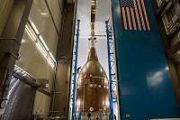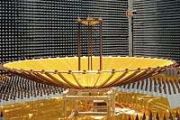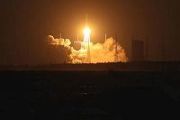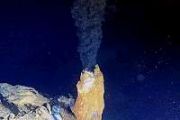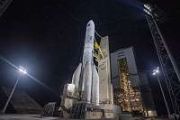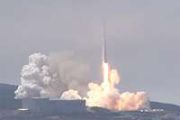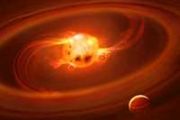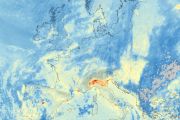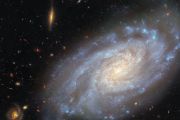
Copernical Team
Cool test of Proba-V companion
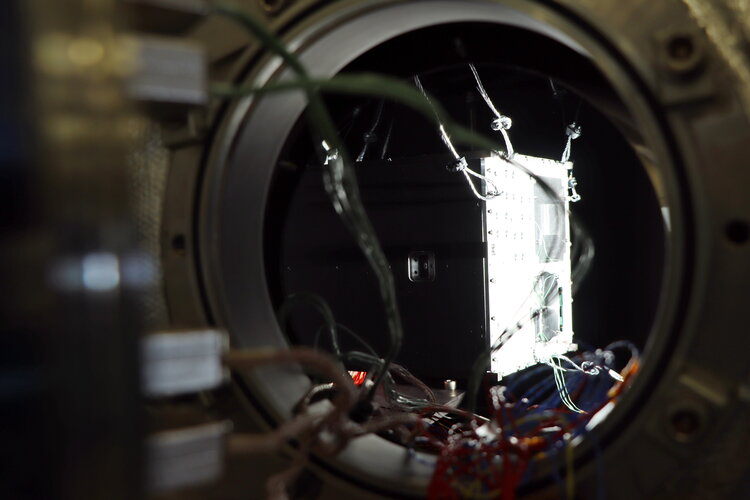 Image:
Cool test of Proba-V companion
Image:
Cool test of Proba-V companion Meet the world’s largest iceberg
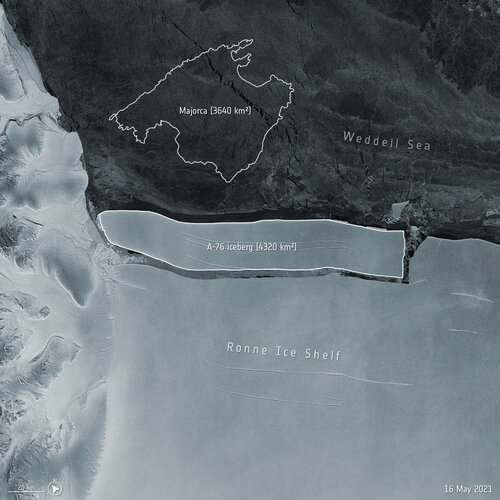 Image:
An enormous iceberg has calved from the western side of the Ronne Ice Shelf, in the Weddell Sea, in Antarctica. The iceberg, dubbed A-76, measures around 4320 sq km in size and is currently the largest berg in the world.
Image:
An enormous iceberg has calved from the western side of the Ronne Ice Shelf, in the Weddell Sea, in Antarctica. The iceberg, dubbed A-76, measures around 4320 sq km in size and is currently the largest berg in the world. US Space Force missile-warning satellite rockets into orbit
A $1 billion missile-warning satellite for the U.S. Space Force rocketed toward orbit Tuesday.
It was the fifth in this series of space-based infrared system satellites. These advanced national security spacecraft are meant to replace the long-time Defense Support Program constellation of surveillance satellites.
United Launch Alliance sent the Atlas V rocket skyward from Cape Canaveral Space Force Station. "Bird away," ULA President Tory Bruno announced via Twitter.
The flight was delayed a day by a bad temperature sensor in ground equipment.
Lockheed Martin won a $1.86 billion contract for this satellite and the next one, due to launch next year. They're intended for an orbit 22,300 miles (36,000 kilometers) high.
Explore further
© 2021 The Associated Press. All rights reserved. This material may not be published, broadcast, rewritten or redistributed without permission.
Back to the space cradle
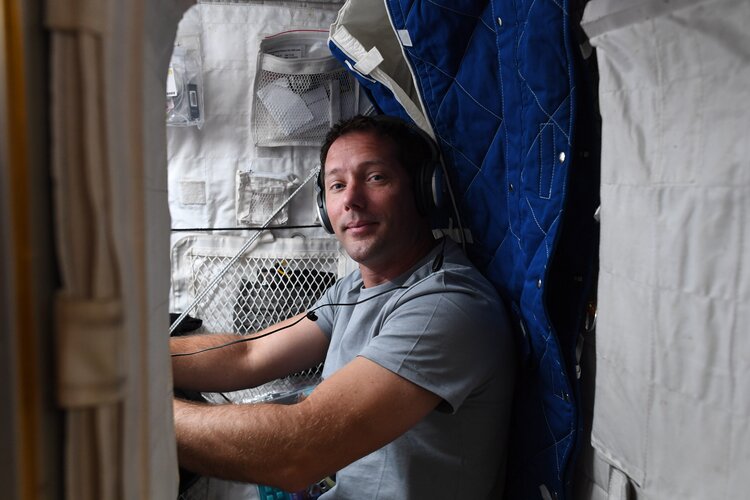
Like an infant adjusting to the new world, ESA astronaut Thomas Pesquet is relearning how to move around the weightless environment of space. His cradle is a familiar place though – this is Thomas’s second mission to the International Space Station, the orbiting lab where he where he broke records for science during his first six months in orbit.
The curious incident of Swarm and sprites in the night-time
We are all familiar with the bolts of lightning that accompany heavy storms. While these flashes originate in storm clouds and strike downwards, a much more elusive type forms higher up in the atmosphere and shoots up towards space. So, what are the chances of somebody taking photographs of these rarely seen, brief ‘transient luminous events’ at the exact same time as a satellite orbits directly above with the event leaving its signature in the satellite’s data?
A new space instrument captures its first solar eruption
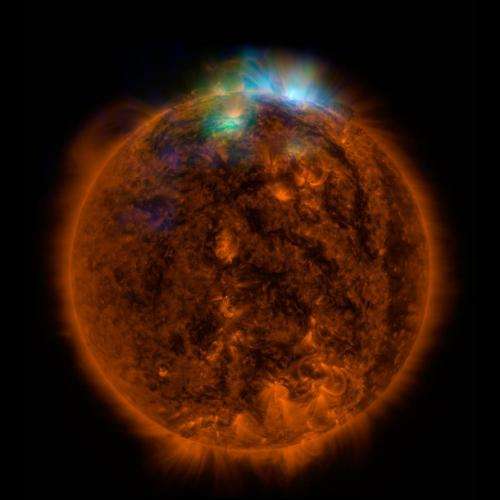
For new sun-watching spacecraft, the first solar eruption is always special.
On February 12, 2021, a little more than a year from its launch, the European Space Agency and NASA's Solar Orbiter caught sight of this coronal mass ejection, or CME. This view is from the mission's SoloHI instrument—short for Solar Orbiter Heliospheric Imager—which watches the solar wind, dust, and cosmic rays that fill the space between the sun and the planets.
It's a brief, grainy view: Solar Orbiter's remote sensing won't enter full science mode until November. SoloHI used one of its four detectors at less than 15% of its normal cadence to reduce the amount of data acquired.
NASA rocket chasing the source of the sun's hot atmosphere
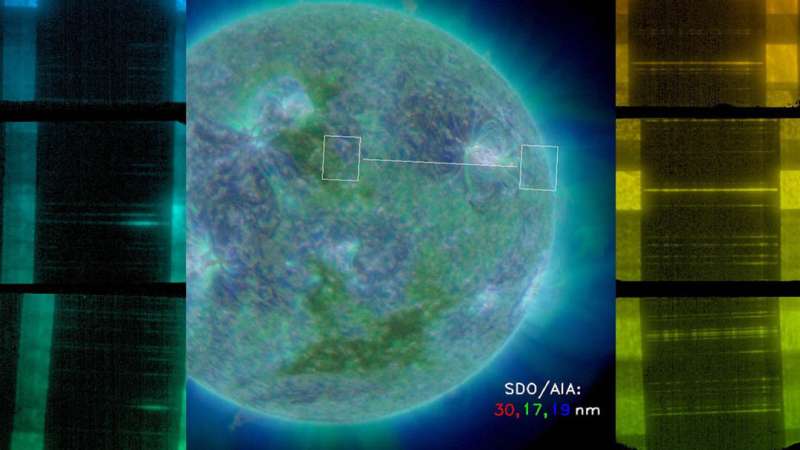
Graphene sensor combines temperature and magnetic measurements
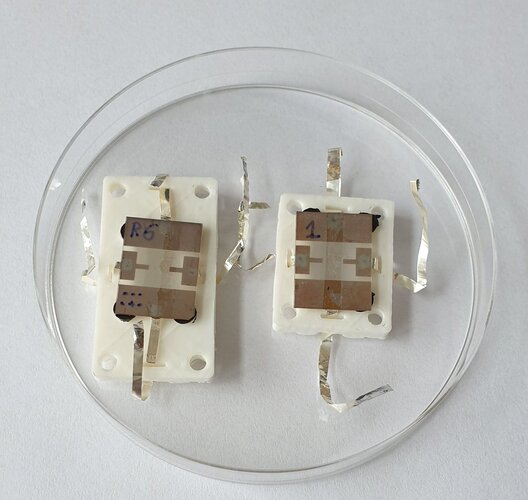
Graphene is the thinnest material known – possessing the thickness of a single atom but 200 times stronger than steel – and has a reputation for versatility. Now an ESA-backed project has come up with yet another use for this ‘wonder stuff’, as the basis for a combined temperature and magnetism sensor.
Robotic Navigation Tech Will Explore the Deep Ocean
 Terrain-relative navigation helped Perseverance land - and Ingenuity fly - autonomously on Mars. Now it's time to test a similar system while exploring another frontier.
On May 14, the National Oceanic and Atmospheric Administration (NOAA) ship Okeanos Explorer will depart from Port Canaveral in Florida on a two-week expedition led by NOAA Ocean Exploration, featuring the technology demons
Terrain-relative navigation helped Perseverance land - and Ingenuity fly - autonomously on Mars. Now it's time to test a similar system while exploring another frontier.
On May 14, the National Oceanic and Atmospheric Administration (NOAA) ship Okeanos Explorer will depart from Port Canaveral in Florida on a two-week expedition led by NOAA Ocean Exploration, featuring the technology demons LatConnect 60 partners with SSTL in first UK-Australia 'Space Bridge' industry partnership
 Smart satellite provider LatConnect 60 and Surrey Satellite Technology Ltd (SSTL) have announced the first partnership under the UK-Australia 'Space Bridge', a program launched earlier this year by the Australian Space Agency and UK Space Agency to boost investment and knowledge across both countries' space sectors.
Under the partnership, Perth-based LatConnect 60 will provide high resolut
Smart satellite provider LatConnect 60 and Surrey Satellite Technology Ltd (SSTL) have announced the first partnership under the UK-Australia 'Space Bridge', a program launched earlier this year by the Australian Space Agency and UK Space Agency to boost investment and knowledge across both countries' space sectors.
Under the partnership, Perth-based LatConnect 60 will provide high resolut 




